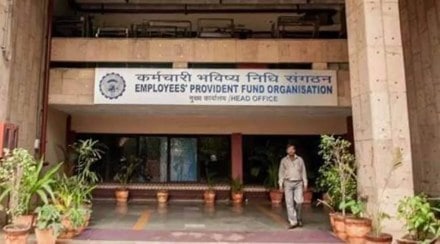The Employees’ Provident Fund Organisation (EPFO) has opened a window for the subscribers of the Employees’ Provident Fund to opt for higher pension, after reallocation of the corpus from EPF to the Employees’ Pension Scheme (EPS). Saikat Neogi explains the current pension framework and what has been proposed
Higher pension
Following the Supreme Court’s November 4, 2022 order, the Employees’ Provident Fund Organisation (EPFO) has laid out the procedures for subscribers to apply for higher pension under the Employees’ Pension Scheme (EPS). All subscribers who were members of the EPS on September 1, 2014, can now contribute up to 8.33% of their basic salary and dearness allowance, instead of 8.33% of pensionable salary capped at `15,000 a month to EPS. For subscribers who opt for this, the employers’ share going to the Employees’ Provident Fund (EPF) since September 2014 will be shifted to the EPS, with the interest earned.
Applications must reach the EPFO by March 3, 2023. An online facility will be provided and operational details will be notified via future circulars.
Employees’ Provident Fund
A subscriber contributes 12% of her basic and dearness allowance (DA) to the EPFO, and the employer contributes a matching amount. Of the latter’s 12%, 8.33% of the ceiling amount of `15,000 a month (`1,250) goes to the EPS, which is the pension pool, and the rest is parked in the EPF. EPF investment gets a tax break of Rs 1.5 lakh under Section 80C, and the interest on it is tax-free. Employees can contribute above the statutory deductions. Contributions of up to 100% of the basic salary and DA can be made to the Voluntary Provident Fund (VPF). The VPF interest rate is the same as EPF’s; returns are tax-free too.
However, income from employee-contribution above Rs 2.5 lakh is taxed. The limit is Rs 5 lakh when employers don’t contribute. Also, employers’ contribution to EPF, General Provident Fund and National Pension System is capped at `7.5 lakh p.a. The rate of interest of EPF is 8.1% for FY22.
Employees’ Pension Scheme
EPS is a pension pool to which 8.33% of employer’s contribution, capped at Rs 1,250 a month, is transferred. Before 2014, the monthly pensionable salary was capped at Rs 6,500. The Centre contributes 1.16% to an employee’s pension. EPS does not offer any interest. Upon 10 years of unbroken contribution, the subscriber will get pension on turning 58.
How the pension is computed
The pension is computed based on the following formula: Number of years of contribution to EPS multiplied by the average salary of the last five years before retirement (the cap is Rs 15,000) divided by 70.
So, if an employee contributes to EPS for 35 years (the typical working period being from 23 years of age to 58 years), she will get a maximum pension of Rs 7,500 a month. The minimum monthly pension is fixed at Rs 1,000 a month.
How a subscriber can opt for higher pension
The employees and their employers will have to submit a joint option to the EPFO to deduct 8.33%of the employers’ share on the higher basic salary (with no cap applicable). This will also entail transferring a part of the corpus accumulated in EPF to EPS from the date of availing the membership of these schemes, along with the interest earned up to the date of payment.
Existing pensioners who retired after 2014 can also opt for higher pension, after depositing the difference between the pension fund contributions at 8.33% of their actual monthly wage on the date of retirement and the ceiling amount (`15,000), together with the interest accrued.
The EPFO will provide an URL and each application will be registered and digitally logged. A receipt number will be provided to the applicant. The employer will have to verify the application with a digital signature for further processing. Any grievance of the applicant can be registered on EPFiGMS, a customised portal of EPFO to redress grievances, after submission of the joint option form and payment of due contribution.
